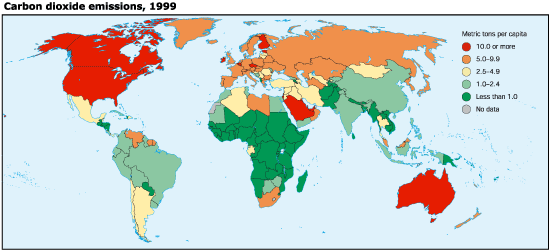New efficiency standards for light bulbs result in the phasing out of inefficient incandescent light bulbs. The average incandescent uses about 75-100 watts whereas the average compact fluorescent light bulb (CFL) uses 15-25 watts. Clearly CFLs are more efficient, and since they last six times longer than incandescent bulbs they don’t need to be replaced nearly as often and are therefore more cost efficient. However, some believe that this efficiency standard undermines the free market and limits people’s constitutional freedoms and choices. Basically, it is illegal to sell inefficient incandescent light bulbs and so people who prefer to waste energy are not allowed to buy their preferred light bulb, and this is seen as a violation of personal liberties. But I would argue that if they really prefer the light quality of an incandescent over a CFL, they can still actually buy incandescent bulbs that are more efficient (use less energy). Or they can buy LEDs or efficient halogen bulbs. Opponents may also argue that incandescent bulb producers might be hit hard by this policy and that jobs would be at risk, but the big light bulb companies like General Electric and Phillips produce incandescent light bulbs, CFLs, LEDs, etc. Additional arguments involve the mercury content in CFLs, but this amount is so little it is harmless; coal-electricity production actually emits more mercury into the environment than CFLs. The more CFLs there are installed across the country, the less electricity is needed to light our homes and businesses. Improving end-source efficiency could solve our energy crisis by dramatically decreasing our energy consumption, and it can all start with screwing in an efficient light bulb.
http://www.usatoday.com/money/industries/energy/environment/2007-12-16-light-bulbs_N.htm
http://www.nytimes.com/2009/07/06/business/energy-environment/06bulbs.html
Monday, April 19, 2010
Subscribe to:
Post Comments (Atom)

I do not think the reason people choose not to replace their lightbulbs with CFL's is because they prefer to waste energy. They are significantly more expensive initially, and it is hard for some people to see that it may save them money in the long term. Also people may see it simply as a hassle that isnt worth saving a few cents, especially since they cannot be disposed of in the trash because of the mercury content. Maybe one suggestion to encourage people to make the switch is to subsidize the production of CFL's so the manufacturers can sell them for less.
ReplyDeleteI agree with Jason that the main reasons people still prefer incandescent bulbs is the cost and convenience. I also believe a big marketing push is necessary to get the issue of energy efficient light bulbs in people's minds. We hear about recycling, hybrids, even stuff like EnergyStar and we think about that when making decisions. In my opinion energy efficient light bulbs are fairly obscure and many people do not know the benefits.
ReplyDeleteI agree with Jason in regards to cost and convenience. Also, I have a friend who works in the hotel industry and she told me that after making the switch to CFL's they have received an increasing number of complaints about the lights and how they seem to have to 'warm up' meaning they have to wait for the lights to reach their full brightness. While I am all for conserving energy and personally I don't mind waiting for the lights to 'warm up' I think that people should be allowed to express their own individual preferences. Ultimately I believe in economics and once the cost of the inefficient bulb outweighs the benefits of convenience and lower cost, people will make the switch.
ReplyDeleteThe price point and lack of education I think is a big reason why people choose not to switch over. Regular light bulbs cost around fifty cents a piece while the new ones can cost two dollars or more. Consider a family who had three children and that was tight on money, it would be hard to invest the money in more efficient light bulbs. However, I switched all of my light bulbs to the more efficient ones but I am not supporting a family and can afford to since I am only supporting myself.
ReplyDeleteWhile incandescent light bulbs are far better for the environment in the long run, and they do end up saving money, I would have to agree that the initial cost of them is a severe deterrent, especially for low income families (and college students). I had my kitchen light blow the other night, and I bought incandescent light bulbs because I could get four for a dollar, which left me some money over to buy groceries for dinner. This is not an excuse, but it's sadly the truth. So long as people can get cheaper light in their house, they will continue to do it.
ReplyDeleteWhat Jennifer says is true, without subsidies or the internalization of negative externalities for incandescent bulbs, environmentally friendly alternatives will continued to be passed over.
ReplyDeleteCurrently, the CFL bulbs are subsidized. At McGuckin hardware, Home Depot and a few other stores, Xcel energy pays to subsidize the up-front cost. Currently, you can buy the bulbs at the subsidized cost of only $1 for up to a 100 watt-equivalent bulb, maybe SLIGHTLY more expensive than incandescents. Also, at this price you will have almost saved the upfront cost of the bulb in energy savings by your next bill!
ReplyDelete